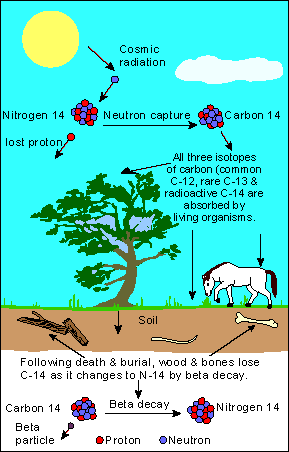| The radiocarbon dating method was developed in the 1940's by Willard
F. Libby and a team of scientists at the University of Chicago. It subsequently
evolved into the most powerful method of dating late Pleistocene and Holocene
artifacts and geologic events up to about 50,000 years in age. The radiocarbon
method is applied in many different scientific fields, including archeology,
geology, oceanography, hydrology, atmospheric science, and paleoclimatology.
For his leadership, Libby received the Nobel Prize in Chemistry in 1960.
|


